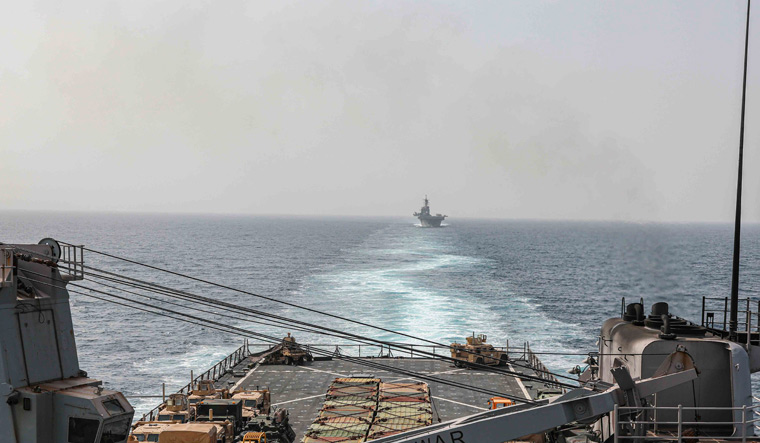
The Red Sea, a vital maritime route connecting the Mediterranean Sea to the Indian Ocean, has recently become a focal point of geopolitical tensions. With shipping facing increased risks due to regional conflicts, vessels are forced to bypass the Suez Canal, leading to extended and perilous journeys. This situation is not only affecting global trade but will also trickle down to the body repair sector in the UK.
It is important that we explore the current state of affairs in the Red Sea, the implications for shipping, and the subsequent impact on the body repair industry, particularly in terms of parts and components supplies.
The Red Sea Conundrum:
The Red Sea has long been a strategic maritime corridor, facilitating the movement of goods between Europe, Asia, and Africa. However, escalating tensions and security concerns in the region have forced ships to take alternative routes, avoiding the Suez Canal. This decision comes with increased costs, longer transit times, and heightened risks for vessels navigating through alternative paths, such as the Cape of Good Hope.
Shipping Challenges and Extended Journeys:
As ships reroute to avoid the Red Sea, the extended journeys contribute to a domino effect of challenges. Longer travel times translate into higher fuel costs, increased maintenance requirements, and greater wear and tear on vessels. Moreover, the heightened risks associated with piracy and geopolitical instability in alternative routes add additional layers of complexity for shipping companies.
Implications for the Body Repair Industry in the UK:
The body repair industry in the UK relies heavily on a seamless supply chain for parts and components. Extended shipping journeys mean delayed deliveries and increased costs for importing essential materials. This, in turn, has a direct impact on the operational efficiency of body repair shops across the country.
Supply Chain Disruptions: Extended shipping routes disrupt the timely delivery of parts, leading to delays in repair processes. Body repair shops may experience shortages, affecting their ability to meet customer demands promptly.
Increased Costs: The rise in shipping costs directly contributes to the overall increase in operational expenses for the body repair industry. Importing parts becomes more expensive, and these additional costs may be passed on to consumers, potentially leading to higher repair bills.
Inventory Management Challenges: Body repair shops need to reevaluate their inventory management strategies to cope with delays in parts delivery. Maintaining an adequate stock of essential components becomes crucial to mitigate the impact of extended shipping times.
Geopolitical Uncertainty: The unpredictability of the situation in the Red Sea region introduces an element of geopolitical uncertainty. Body repair businesses may need to adapt to evolving circumstances, making long-term planning and forecasting more challenging.
The ripple effects of tensions in the Red Sea are reaching far beyond the realm of geopolitics, impacting industries worldwide. The body repair industry in the UK has and is grappling with supply chain disruptions, increased costs, and operational challenges as a result of extended shipping journeys. Navigating these issues requires a strategic approach, with businesses in the sector needing to adapt to the evolving landscape of global trade and maritime security. As the situation unfolds, it becomes imperative for stakeholders in the body repair industry to monitor developments closely and proactively implement measures to ensure the resilience of their operations.





